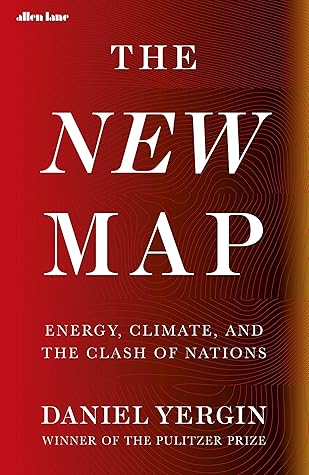More on this book
Community
Kindle Notes & Highlights
Read between
April 27 - May 5, 2021
By 2019, it was down to 24 percent, and natural gas had risen to 38 percent.
“This will sound unscientific,” he once said, “but most of the areas where petroleum is found are relatively warm. I like warm.”
Between the end of the Great Recession, in June 2009, and 2019, net fixed investment in the oil and gas extraction sector represented more than two-thirds of total U.S. net industrial investment.
In 2019, after an investment of more than a quarter trillion dollars, Australia overtook Qatar to become the largest LNG supplier.
Canada supplied, in 2019, about 50 percent of total U.S. oil imports, a volume three times greater than all the oil the United States imported from OPEC countries.
Two bureaus at State spent a total of seven years reviewing the proposed pipelines and eventually, in 2015, came out with a report large enough to fill a bookshelf—eleven volumes in all—saying that the project should be approved and that there was no environmental reason not to do so.
At independence, Ukraine was “born nuclear,” for it inherited nineteen hundred nuclear warheads from the Soviet Union, making it the world’s third-largest nuclear state. In 1994, in what is known as the Budapest Memorandum, it gave up those weapons and transferred them to Russia. In exchange, Russia, Britain, and the United States solemnly promised to “respect” the “existing borders of Ukraine.”2 ONE
March 2011, a giant tsunami, set off by a massive earthquake, inundated a nuclear power station at Fukushima in Japan, resulting in the worst nuclear power accident since the Chernobyl reactor in Ukraine blew up in 1986.
Worldwide, over forty countries now import LNG, compared to just eleven in 2000. Exporting countries have increased from twelve to twenty. Overall global LNG demand in 2019 was almost four times larger than in 2000,
“Incident of the 9 Islets.”
“ambiguity on all fronts,”
Only in 1877 was it dubbed Die Seidenstrasse—“the Silk Road”—by Baron Ferdinand von Richthoften, a German geologist and geographer who had been dispatched to China to scout mining opportunities and a possible route for a railroad to Europe.
also without consideration for ethnic divisions.
Lawrence’s consuming passion was to ignite the Arab revolt. He organized guerrilla attacks on the Turkish railway system, and he ensured that Faisal and Arab horsemen were at the forefront when the Allied forces took Damascus from the Turks.
British geopolitical interference leading to setting the stage for internecine Arab / Muslim rivalry
Britain needed “to obtain the undisputed control of the greatest amount of Petroleum that we can.”
“We are witnessing the export of the Iranian Revolution throughout the region—from Bahrain and Iraq to Syria, Yemen, and North Africa.”
Venezuela has the largest proven oil reserves in the world, larger than Saudi Arabia’s, though “heavier” and more expensive to produce.
IN 1933, STANDARD OIL OF CALIFORNIA—SOCAL, NOW Chevron—won the right to explore for oil in Saudi Arabia. On March 4, 1938, a telegram was dispatched from Saudi Arabia to the San Francisco headquarters of Socal. It reported that in a test in the eastern province on a well called Damman #7, at a depth of 4,694 feet, oil had flowed at the rate of 1,585 barrels per day.
The Islam of al-Wahhab became the faith of the new state, critical to integrating the different tribes into the reestablished Saudi realm.
Over time, however, the money that it spent on promoting fundamentalist Islam abroad would also foster the rise of extremism and jihadism.
In the United States, the percentage of those between sixteen and forty-four holding a driver’s license has been continuously declining since the early 1980s, especially among younger people.
Auto-Tech.” These would either be vertically integrated or strategically allied companies, from vehicle manufacture, to fleet management, to ride hailing through their own platforms.
As late as 2006, China had barely a walk-on role in photovoltaics production.
Global installed capacity in 2019 was 642 gigawatts, fourteen times what it had been little more than a decade earlier.
In 2018, there were 867 cars for every thousand people in the United States, 520 in the European Union. Compare that to the 339 in Russia, the 208 in Brazil, the 160 in China—and just 37 in India.


